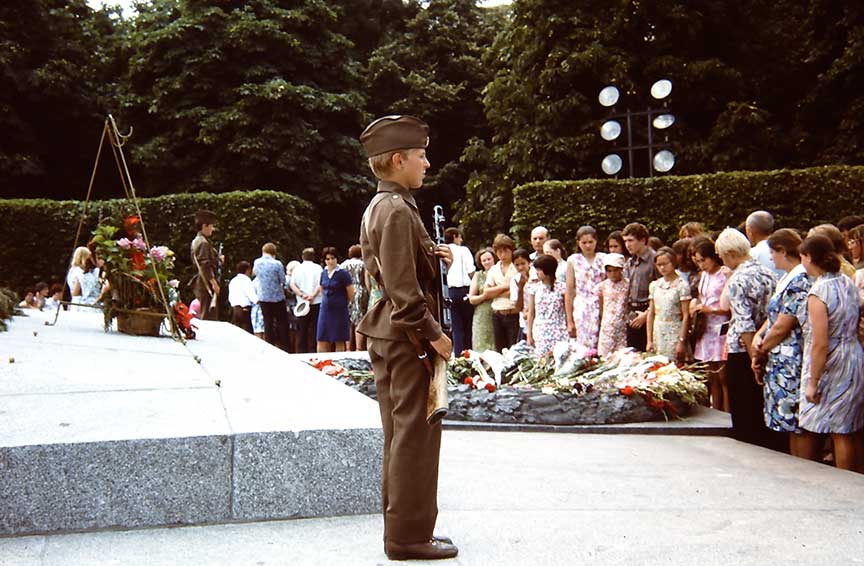1988 Soviets Pull Out of Afghanistan

Sri Lanka
The Soviets agreed to remove their troops from Afghanistan. There was a total of 120,000 troops in Afghanistan at the time. The Soviet losses were estimated at 16,000 soldiers killed during the war in Afghanistan.
Afghanistan, a historically volatile region with diverse ethnic and tribal groups, had been a focus of the Cold War power struggle between the United States and the USSR for years. However, the situation escalated in 1978 with the Saur Revolution, which saw the communist People's Democratic Party of Afghanistan (PDPA) overthrowing the country's president. The PDPA was divided and unpopular, and its attempts to enforce radical social reforms led to civil unrest and rebellion, especially from the rural tribal areas. By 1979, the situation had become untenable, and the USSR, fearing the collapse of a friendly government on its southern border, decided to intervene.
Invasion and Occupation
On December 24, 1979, the Soviet Union invaded Afghanistan. The USSR had two primary goals: to maintain a communist and pro-Soviet regime in Afghanistan and to suppress the growing insurgency, known as the Mujahideen. However, the Soviets soon discovered that achieving these goals would be more difficult than they had anticipated. The Mujahideen were not a single, unified force, but a diverse coalition of tribal and ethnic groups. Moreover, they were receiving substantial financial and military support from several countries, including the United States, Pakistan, and Saudi Arabia, as part of a Cold War strategy to weaken the USSR.
Withdrawal
By the mid-1980s, the Soviet Union was mired in a costly and unending conflict. Casualties were mounting, and the economic strain was becoming unbearable. Furthermore, international opinion was largely against the USSR due to the perception of the war as an act of aggression against a smaller, less powerful nation. Soviet leader Mikhail Gorbachev, who came to power in 1985, recognized the need for change. He termed the war "a bleeding wound," and initiated steps to pull out of the conflict.
In April 1988, after extensive negotiations, the Soviet Union, Afghanistan, the United States, and Pakistan signed the Geneva Accords. The agreement did not include the Mujahideen, but it provided a timeline for Soviet withdrawal and a guarantee of non-interference from the U.S and Pakistan in Afghanistan's internal affairs.
The Soviet withdrawal commenced in May 1988 and was completed on February 15, 1989. It was a phased, orderly exit, with the Soviets maintaining a semblance of control. Nevertheless, the power vacuum left by their departure led to further conflict and instability in Afghanistan.
Aftermath
The Soviet withdrawal did not lead to peace in Afghanistan. Instead, the country descended into a brutal civil war as different factions of the Mujahideen vied for control. Eventually, this led to the rise of the Taliban and their oppressive regime, culminating in the international conflict that continues to this day.
For the USSR, the Afghan War was a significant factor in its eventual dissolution. It strained the Soviet economy, led to the loss of thousands of Soviet lives, and was a public relations disaster. It's often seen as a key event in the end of the Cold War, demonstrating the limits of Soviet power and contributing to the changing international dynamics of the late 20th century.
 >
>